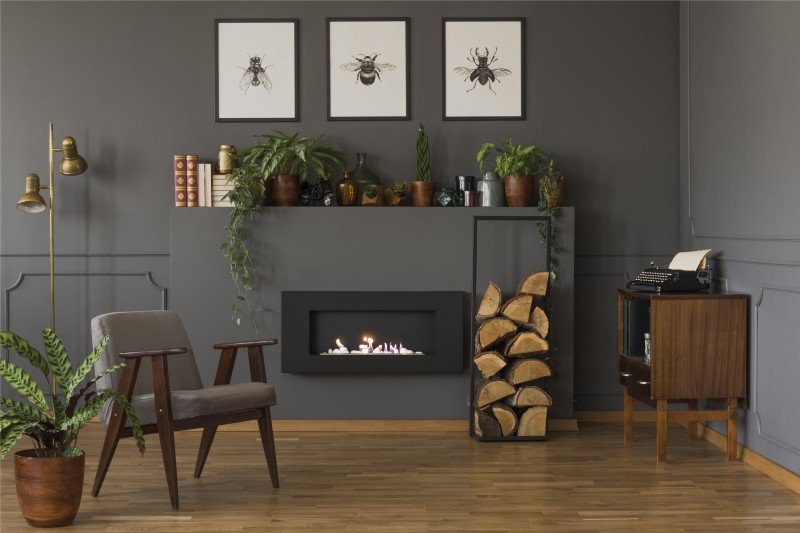Find Out What Fireplace Tricks Celebs Are Using
The Fireplace: A Warm Embrace of Tradition and Comfort
Fireplaces have been an integral part of human habitation for centuries, acting as a source of warmth, a meeting place, and a symbol of convenience. While the modern variations might differ remarkably from their ancient forefathers, the appeal of a fireplace endures. This post checks out the different elements of fireplaces, including their history, function, types, and maintenance, while also dealing with regularly asked questions.
The Evolution of Fireplaces
Fireplaces date back to prehistoric times when open flames were utilized for cooking, heating, and defense from wildlife. Over the centuries, fireplaces progressed from easy fire pits to the sophisticated performances we see today. Here is a quick timeline of their development:
- Prehistoric Era: Cavemen utilized open flames for warmth and cooking. Wind and smoke often blew into residences.
- Middle Ages: Stone and brick fireplaces became typical in homes and castles, incorporating chimneys to bring smoke outside.
- Renaissance: Elaborately created mantels emerged, and fireplaces became centers of social interaction.
- Industrial Revolution: Innovations in heating products resulted in a variety of designs and functionalities.
- Modern Era: The introduction of gas, electric, and bioethanol fireplaces offered cleaner options to traditional wood-burning units.
Table 1: The Evolution of Fireplaces
Period
Attributes
Prehistoric Era
Open flames for heat and cooking
Middle Ages
Stone and brick structures with early chimneys
Renaissance
Ornate mantels, social centers
Industrial Revolution
Varied styles, development of brand-new materials
Modern Era
Gas, electric, and bioethanol options
The Purpose of a Fireplace
Fireplaces serve double functions: they supply physical heat and create an emotional environment. Property owners typically collect around the fireplace to bond, share stories, and enjoy a cozy setting. Fireplace Online of a fire can be relaxing, adding to a sense of relaxation and intimacy. Beyond individual pleasure, fireplaces likewise use functional advantages, including:
- Home Heating: Effective heat source, specifically in cooler climates.
- Increased Home Value: A well-designed fireplace can boost the aesthetic value of a home.
- Emergency situation Heating: In case of power failures, wood-burning fireplaces can serve as an essential heat source.
- Aesthetic Appeal: A centerpiece that adds to interior decoration.
Kinds of Fireplaces
Today, fireplaces are available in different styles and fuel types, accommodating a varied variety of preferences and settings. Here are some common types:
Wood-Burning Fireplaces:
- Traditional fire pits
- Timeless masonry fireplaces
- Require considerable maintenance and chimney maintenance
Gas Fireplaces:
- Available in both direct vent and ventless ranges
- Much easier to use and keep than wood-burning fireplaces
- Offer instantaneous heat with a flick of a switch
Electric Fireplaces:
- Offer associated heat sources without real flames
- Frequently developed to simulate traditional fireplaces
- Suitable for smaller areas and homes without a chimney
Bioethanol Fireplaces:
- Use bioethanol fuel, providing a sustainable option
- Require no ventilation and can be put anywhere
- Safe and easy to preserve
Table 2: Types of Fireplaces
Type
Fuel Source
Functions
Maintenance Requirements
Wood-Burning
Wood
High atmosphere, heat source
Routine chimney cleaning
Gas
Natural gas or lp
Instantaneous heat
Minimal, periodic servicing
Electric
Electrical power
Easy setup
Very low upkeep
Bioethanol
Bioethanol fuel
Ventless, portable
Low, generally cleaning
Maintenance and Safety Considerations
Owning a fireplace involves certain duties, especially regarding its safe operation and long-term upkeep. Here are necessary upkeep tips and safety standards:
Maintenance Tips:
- Annual Inspection: Always have your chimney and fireplace inspected at least as soon as a year by a qualified specialist.
- Regular Cleaning: Clean out ashes and particles after each use, and ensure the flue is open before starting a fire.
- Examine for Cracks: Inspect masonry for cracks or damage to avoid structural concerns.
- Use Proper Fuel: Only use dry, skilled wood for wood-burning fireplaces; do not burn treated wood.
Security Guidelines:
- Install Smoke Detectors: Ensure smoke detectors are functional, evaluating them month-to-month and changing batteries as required.
- Keep a Fire Extinguisher: Have one neighboring, even if a fireplace is utilized occasionally.
- Monitor Flames: Never leave a fire unattended, and make sure children and animals are monitored around the fireplace.
Regularly Asked Questions (FAQs)
1. How can I reduce smoke from a wood-burning fireplace?
To lessen smoke, usage dry, skilled wood, and make sure that your chimney is clean and unblocked.
2. Is it safe to utilize gas fireplaces during a gas leak?
Never use a gas fireplace during a gas leakage. Immediately evacuate the area and contact gas services for help.
3. Can I set up an electric fireplace myself?
Electric fireplaces are normally easy to set up, but it is recommended to speak with specialists to ensure security and compliance with local structure codes.
4. What is the best kind of fireplace for small spaces?
Electric fireplaces or bioethanol models are often best for small spaces, as they do not need substantial ventilation or structural adjustments.
Fireplaces have transcended their initial function of supplying heat to become cherished components of home style and household life. They stimulate memories of heat, events, and togetherness while offering practical benefits that improve modern living. By understanding the numerous kinds of fireplaces, their upkeep, and security practices, property owners can enjoy the timeless appeal of this beloved function for generations to come.
